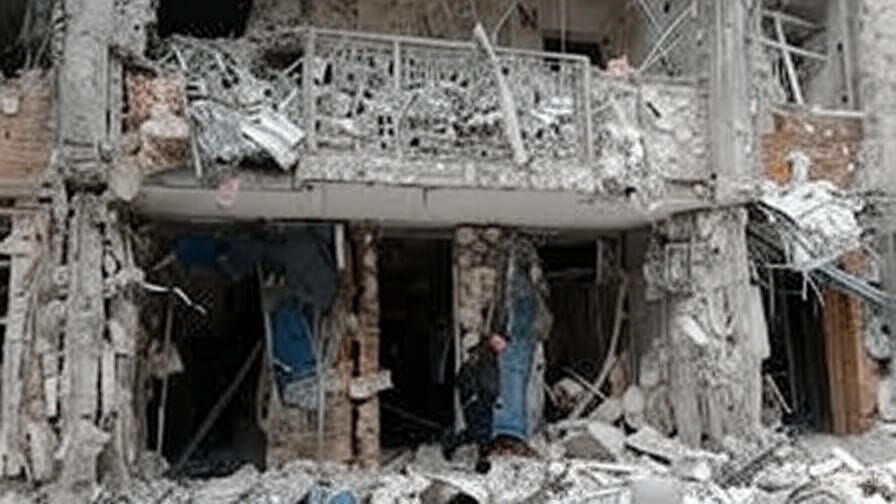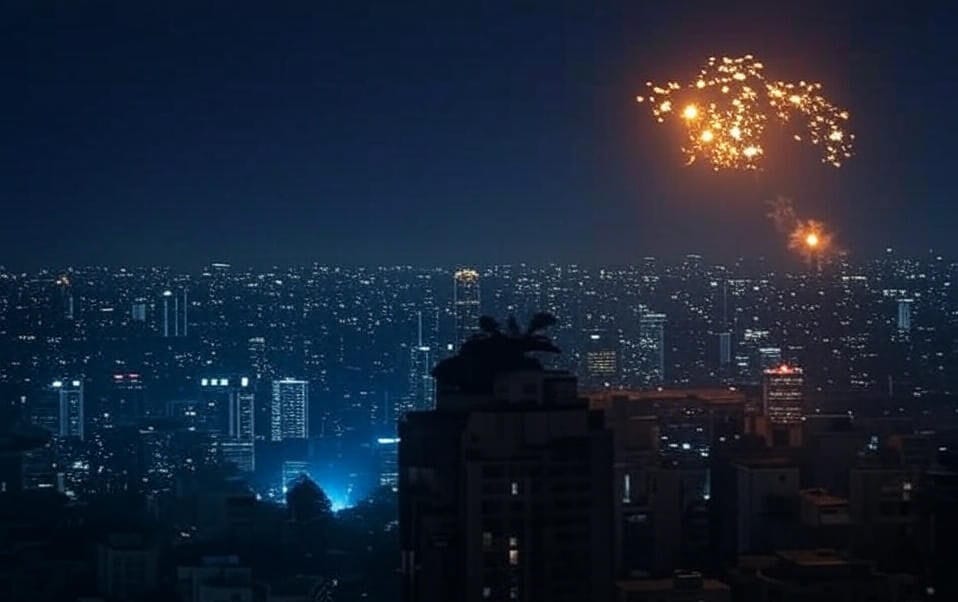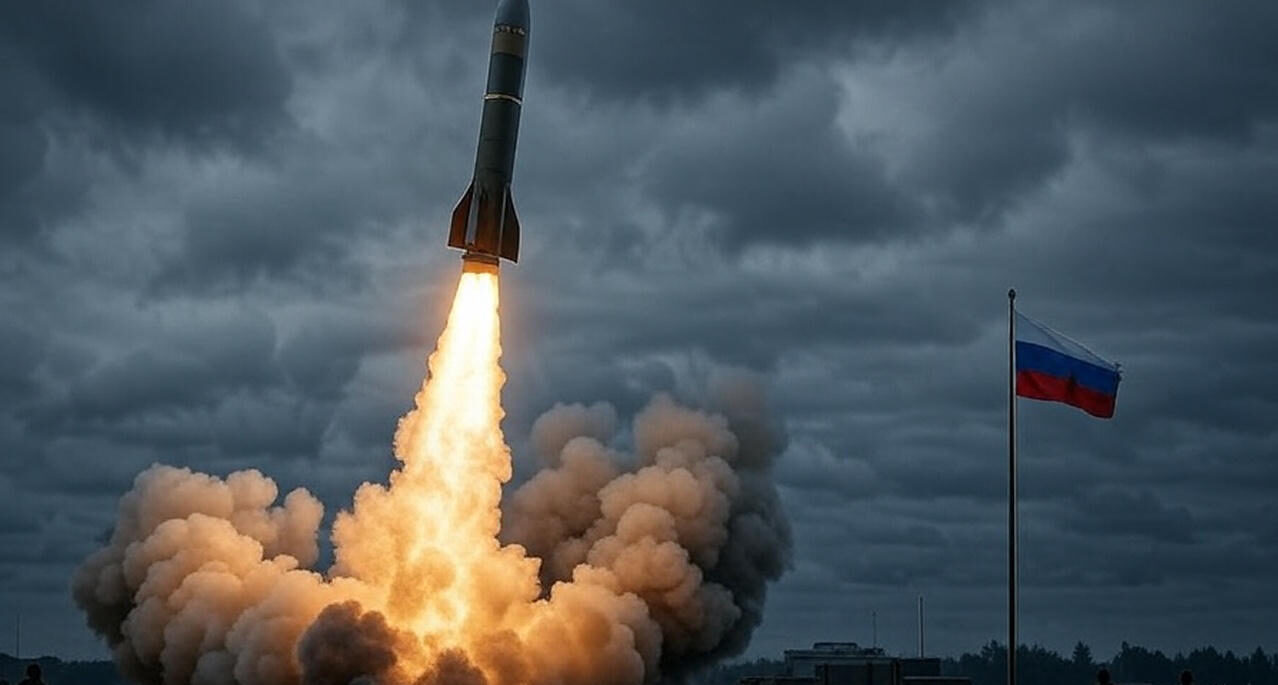
On July 4, 2025, Russia executed its most extensive aerial assault of the Ukraine conflict, targeting Kyiv with 537 aerial weapons, including 477 drones and decoys and 60 missiles. The assault, propelled hours after a phone call between U.S.President Donald Trump and Russian President Vladimir Putin, injured at least 23 civilians, damaged critical infrastructure, and claimed the life of Ukrainian F-16 pilot Lieutenant Colonel Maksym Ustymenko. This escalation highlights the ongoing intensity of the Russia-Ukraine war and casts doubt on prospects for diplomatic resolution.
Scale and Impact of the Assault
The Russian offensive commenced in the early hours of July 4, deploying an unprecedented array of aerial weaponry. The barrage, primarily consisting of Shahed drones and missiles, struck multiple regions, with western Ukraine, including Lviv and Rivne, facing significant bombardment. In Kyiv, the capital, the attack disrupted civilian life, with debris from intercepted drones igniting fires in residential areas, schools, and energy facilities. Emergency services worked tirelessly to contain the damage, reporting 23 injuries in the city alone.
Ukrainian air defenses, strained by the assault’s scale, intercepted or jammed 24 of the 41 Shahed drones launched overnight. Despite these efforts, the barrage caused widespread destruction, particularly to energy infrastructure critical for Ukraine’s winter resilience. The targeting of western regions, a hub for humanitarian aid, suggests Russia’s intent to disrupt Ukraine’s logistical networks. The death of Lieutenant Colonel Ustymenko, killed while countering the drones, underscores the immense risks faced by Ukraine’s defenders.
The Trump-Putin Dialogue
The assault’s timing, taking after a call between Presidents Trump and Putin, has drawn worldwide attention. Initiated by Trump to explore paths to end the conflict, the discussion yielded no progress, with Trump publicly expressing disappointment. Putin reaffirmed Russia’s commitment to its objectives, including control over annexed regions—Donetsk, Luhansk, Kherson, and Zaporizhzhia—while signaling conditional openness to negotiations. The Kremlin’s decision to launch such a significant attack shortly after suggests a deliberate escalation, possibly to assert dominance amid diplomatic overtures.
Ukrainian President Volodymyr Zelenskyy, addressing a NATO summit in Denmark on July 4, condemned the attack and urged enhanced international support, particularly for air defense systems. He proposed a leaders’ summit with Putin and Trump to pursue peace, emphasizing Ukraine’s sovereignty. The attack has intensified concerns about the viability of negotiations, with Russia’s actions signaling an unrelenting stance.
Ukrainian Resilience and Counteractions

Despite the assault’s ferocity, Ukraine demonstrated resolve. Air defense units, bolstered by Western-supplied systems like Patriot missiles, mitigated further devastation. Concurrently, Ukrainian forces conducted retaliatory drone strikes, damaging Russian military assets, including four fighter jets in Volgograd Oblast and a radar system in occupied Crimea. These operations reflect Ukraine’s ongoing efforts to counter Russian advances, even as it faces resource constraints.
In the Sumy region, Ukrainian forces repelled a Russian incursion, liberating the village of Andriivka and advancing near Oleksiivka.The murdering of Russian Major Common Mikhail Gudkov in Kursk assist highlights Ukraines capacity to target high-value resources. These actions underscore Ukraine’s determination to resist, despite the toll of prolonged conflict.
International Reactions and Challenges
The international response was swift. French President Emmanuel Macron, who also spoke with Putin on July 4, reiterated France’s support for Ukraine and called for an immediate ceasefire. The European Union extended sanctions on Russia for six months, though Slovakia’s veto of a new sanctions package exposed divisions within the bloc. The attack has amplified concerns over U.S. military aid, with reports of halted Patriot missile shipments prompting unease among NATO allies and Ukrainian officials. At the NATO summit, Zelenskyy stressed the need for sustained U.S. support to counter Russian aggression.
The involvement of North Korean troops, with up to 30,000 potentially joining Russian forces, has heightened fears of a broader conflict. North Korean leader Kim Jong-un’s public honoring of soldiers killed in Ukraine underscores this growing alliance, complicating the geopolitical landscape.
Strategic and Humanitarian Implications

The July 4 assault highlights Russia’s strategy of attrition, targeting civilian and energy infrastructure to erode Ukrainian resilience. With winter approaching, damage to power facilities threatens humanitarian crises, particularly for displaced populations. Russia’s claim of fully occupying Luhansk, if verified, marks a significant territorial gain, while advances in Donetsk signal ongoing pressure on Ukraine’s eastern front.
For Ukraine, the attack underscores the urgent need for enhanced air defenses and international aid. The loss of personnel like Ustymenko and the strain on resources highlight the war’s human and material costs. A recent poll indicating 56% of Ukrainians are open to territorial compromises reflects growing war fatigue, though 12.8% advocate fighting to reclaim all lost territories.
A Precarious Path Forward
The events of July 4, 2025, encapsulate the Russia-Ukraine war’s unrelenting brutality. Russias enormous ramble ambush, coupled with the slowed down Trump-Putin discourse, recommends a developing stalemate.Ukraine’s resilience, bolstered by counterstrikes and international support, faces mounting challenges as Russia escalates its campaign. The international community must navigate diplomatic complexities while addressing Ukraine’s immediate needs, particularly in air defense and humanitarian aid.
As the strife enters its fourth year, the individuals of Kyiv and other influenced districts persevere colossal hardship with immovable resolve.
The path to peace remains uncertain, with Russia’s actions signaling a commitment to military dominance over dialogue. For now, Ukraine’s fight continues, underpinned by a determination to safeguard its sovereignty against overwhelming odds.






Sprunki Game takes the fun of Incredibox to new levels with fresh beats and visuals. It’s a must-try for music lovers who enjoy creative expression. Check it out at Sprunki Game.